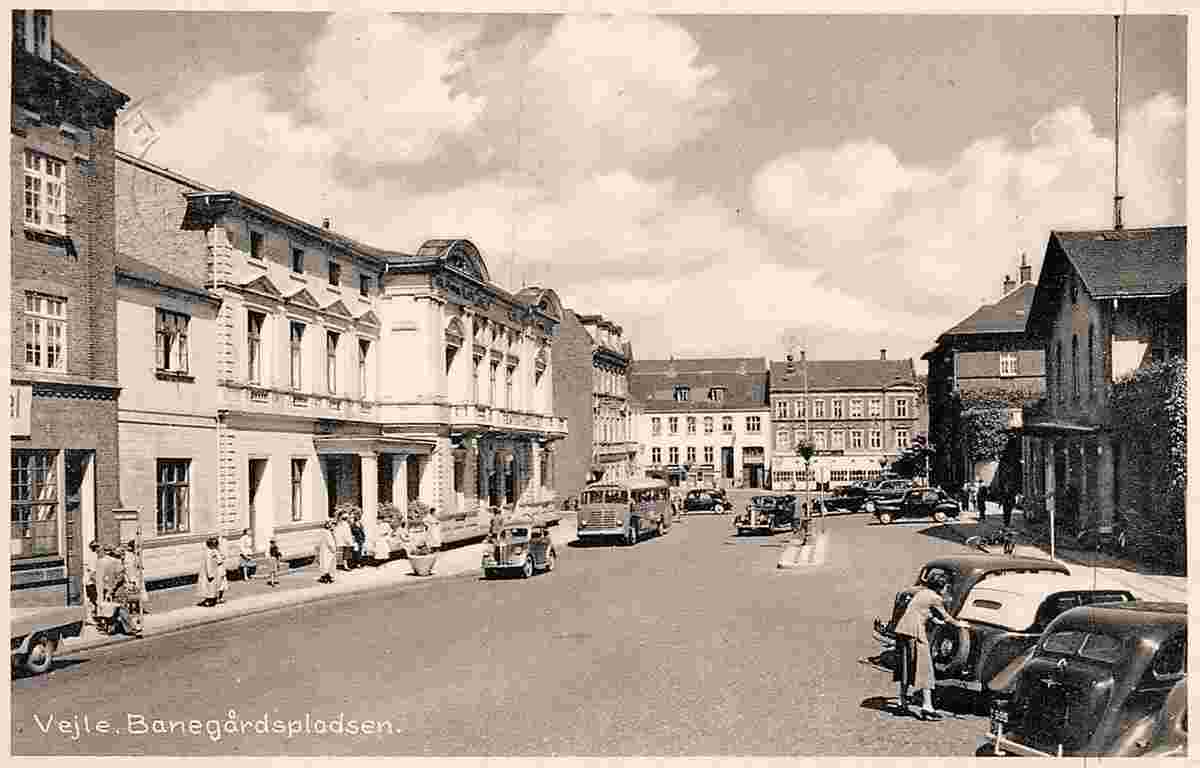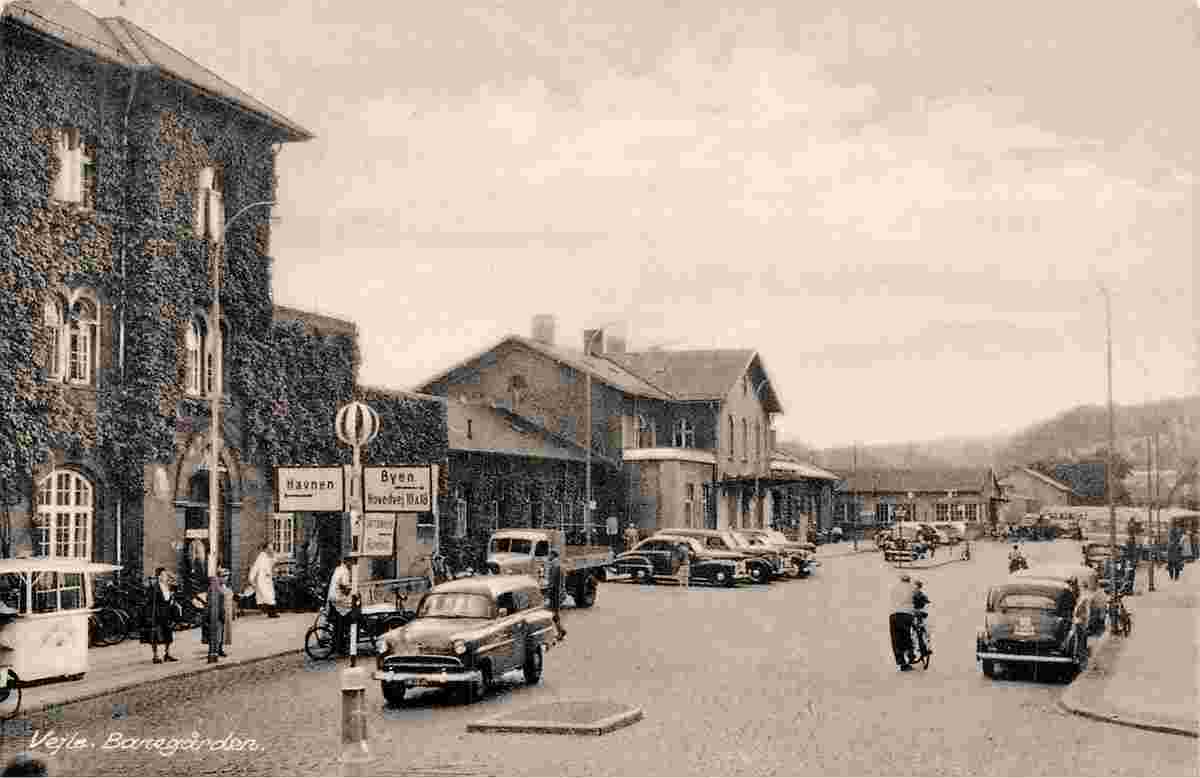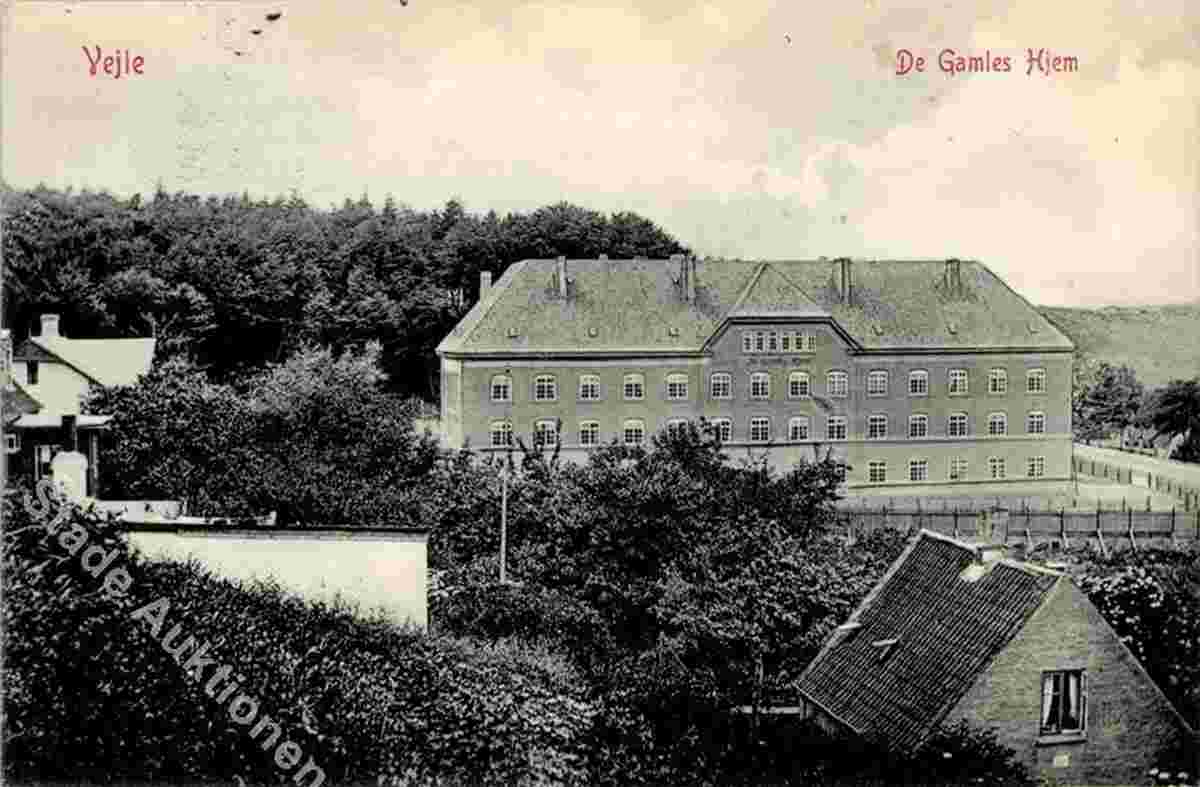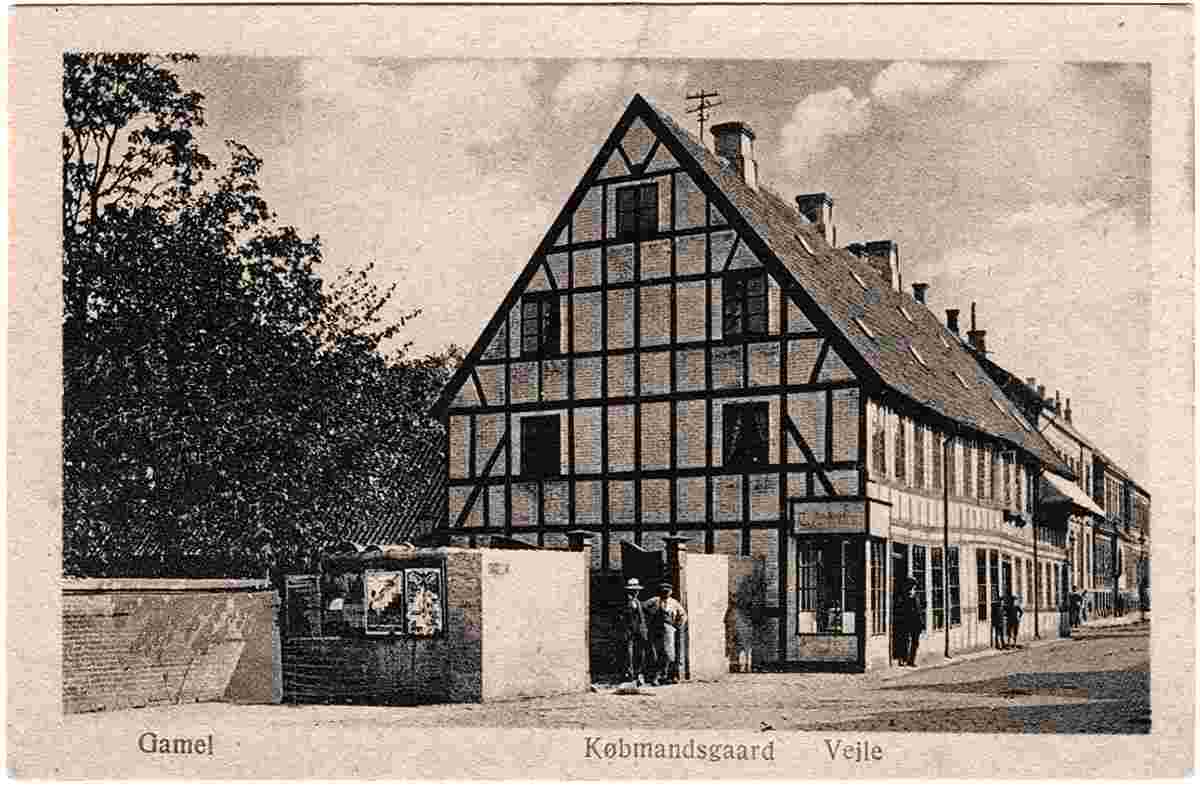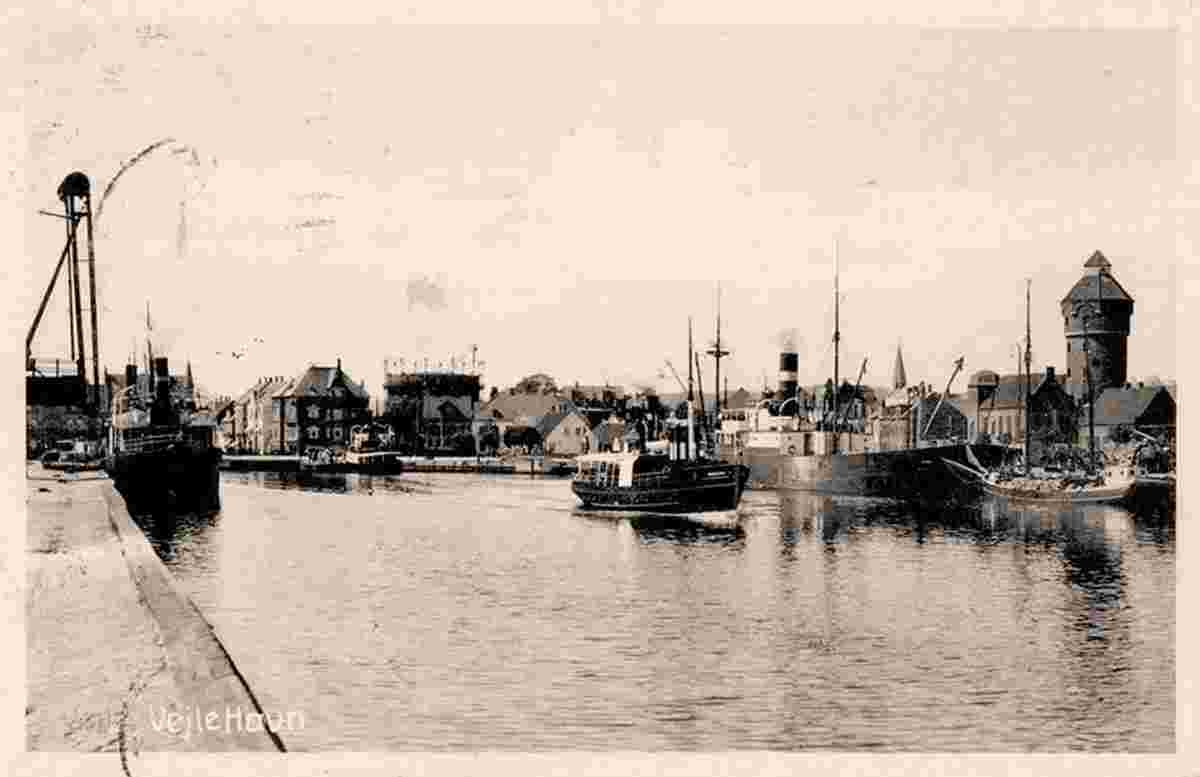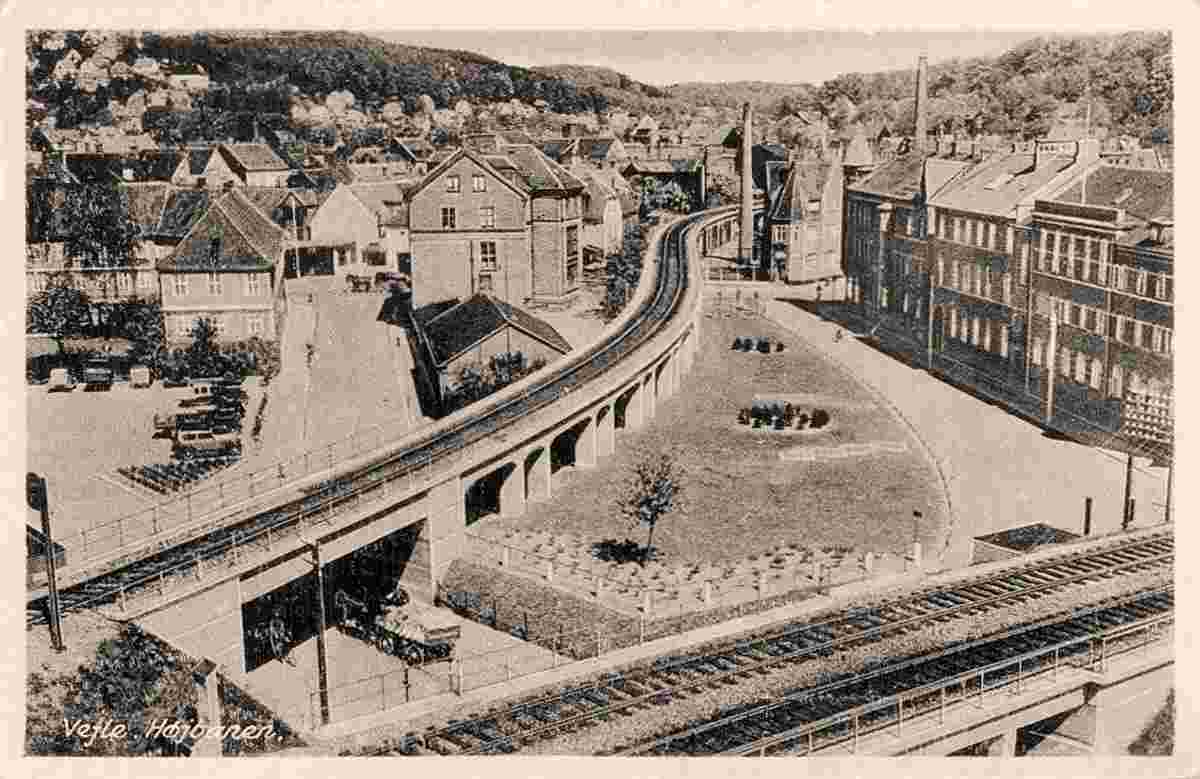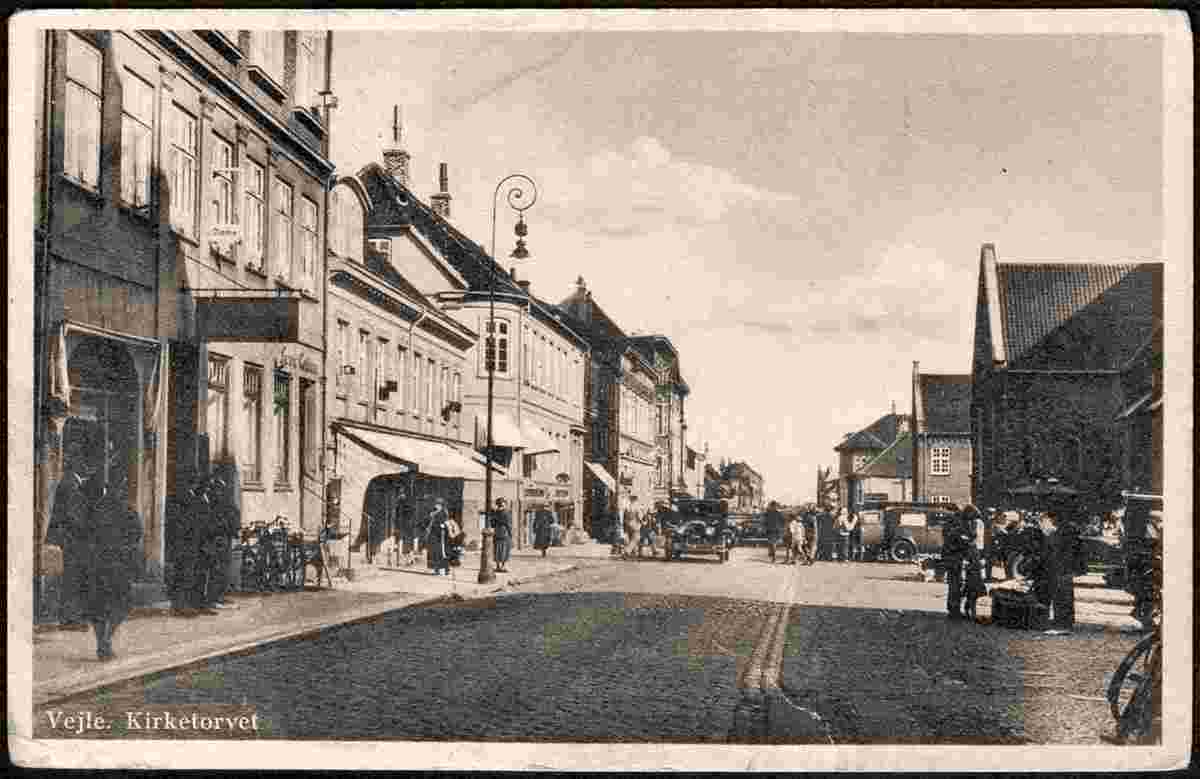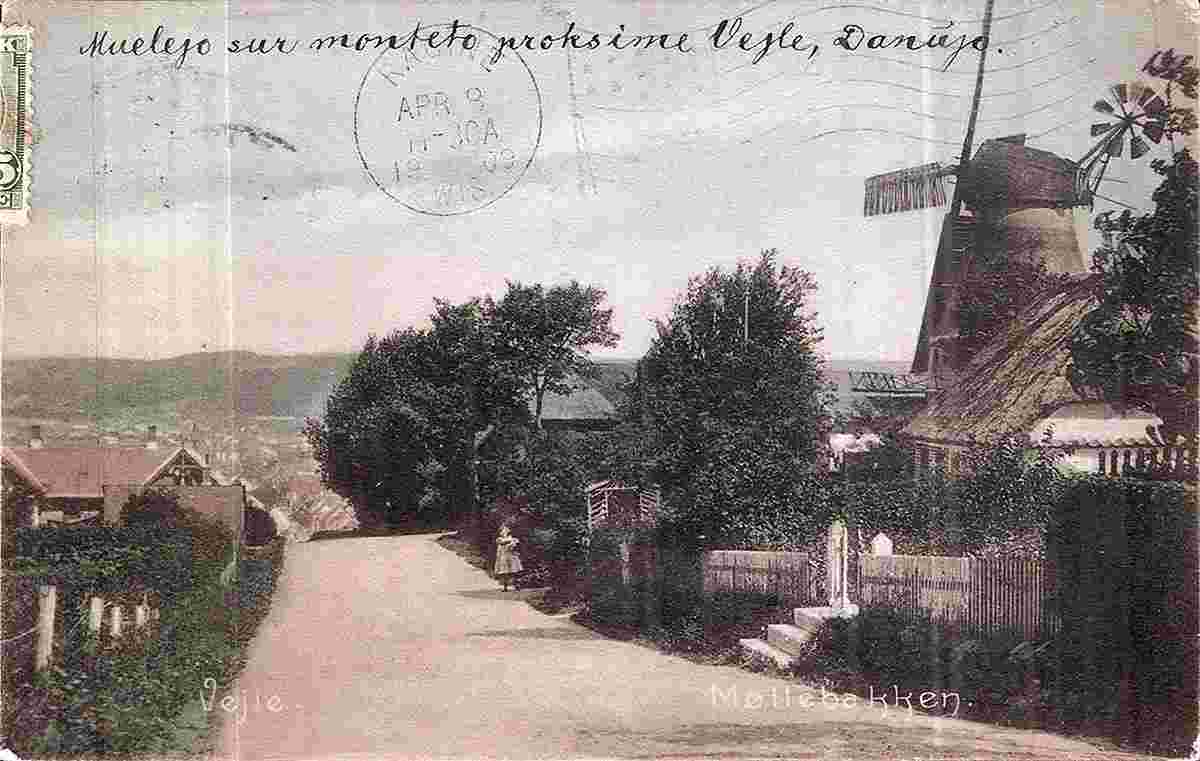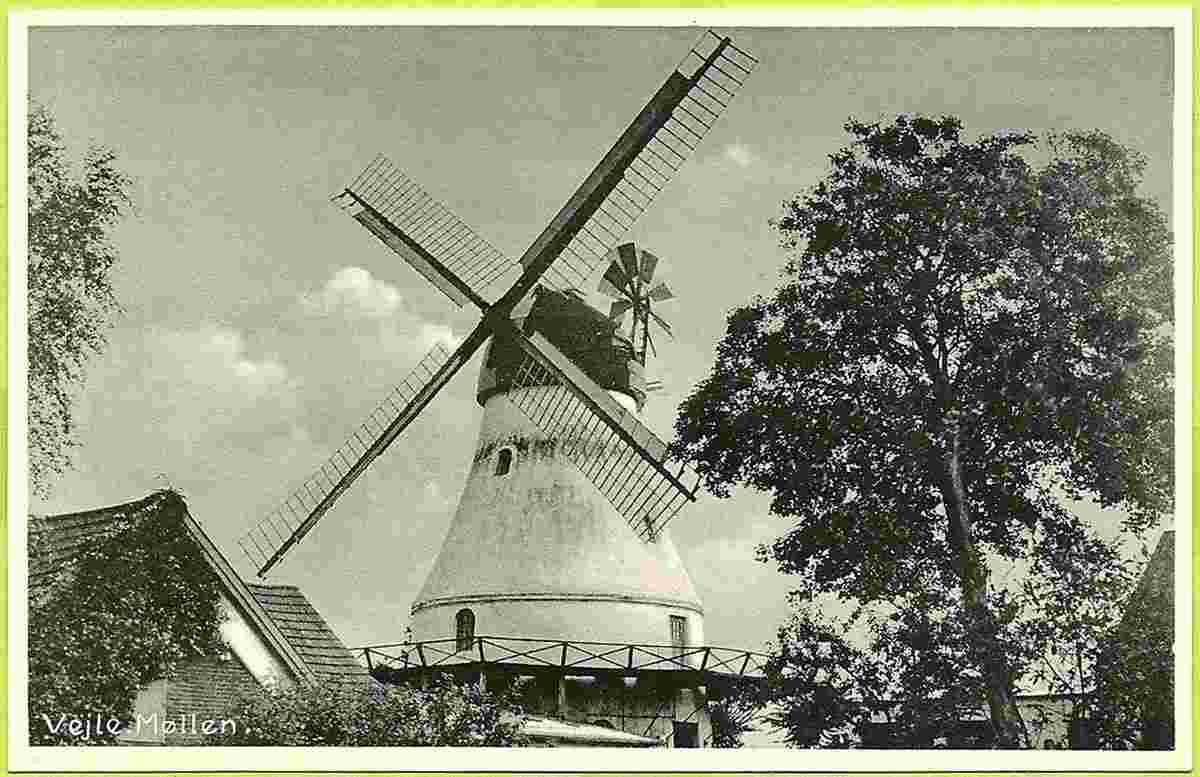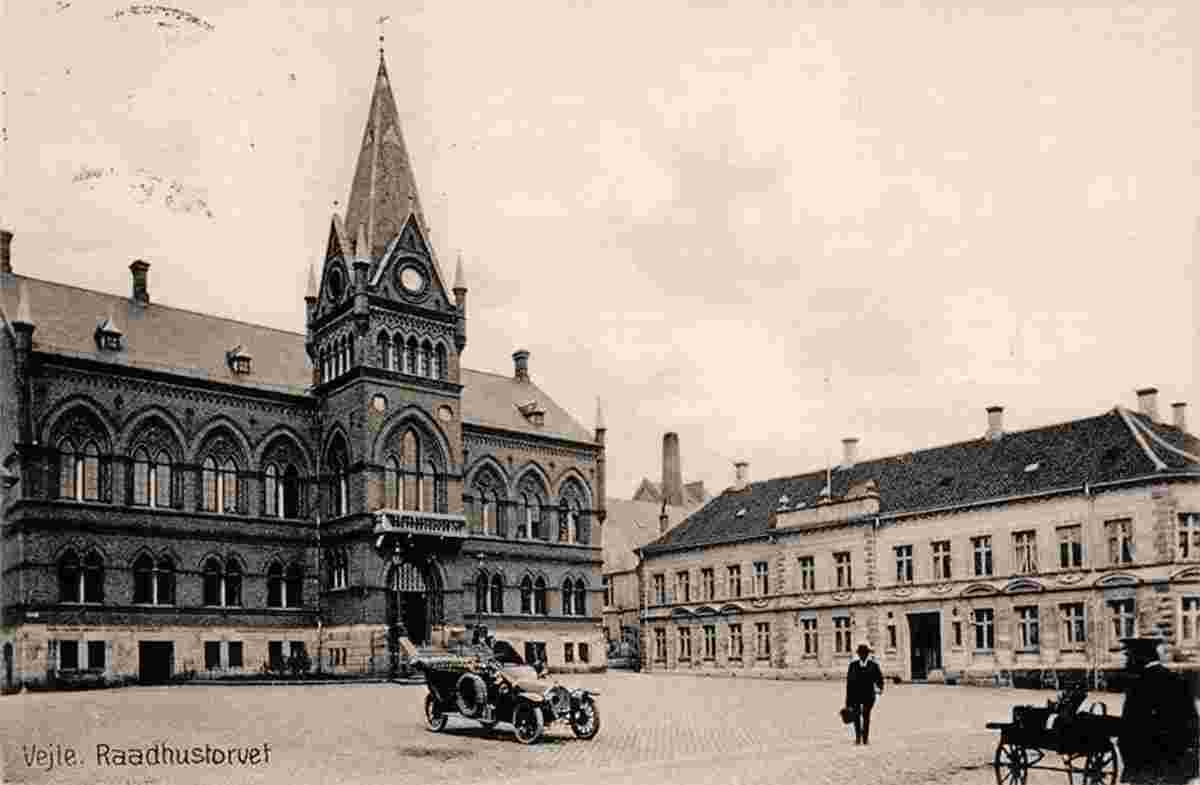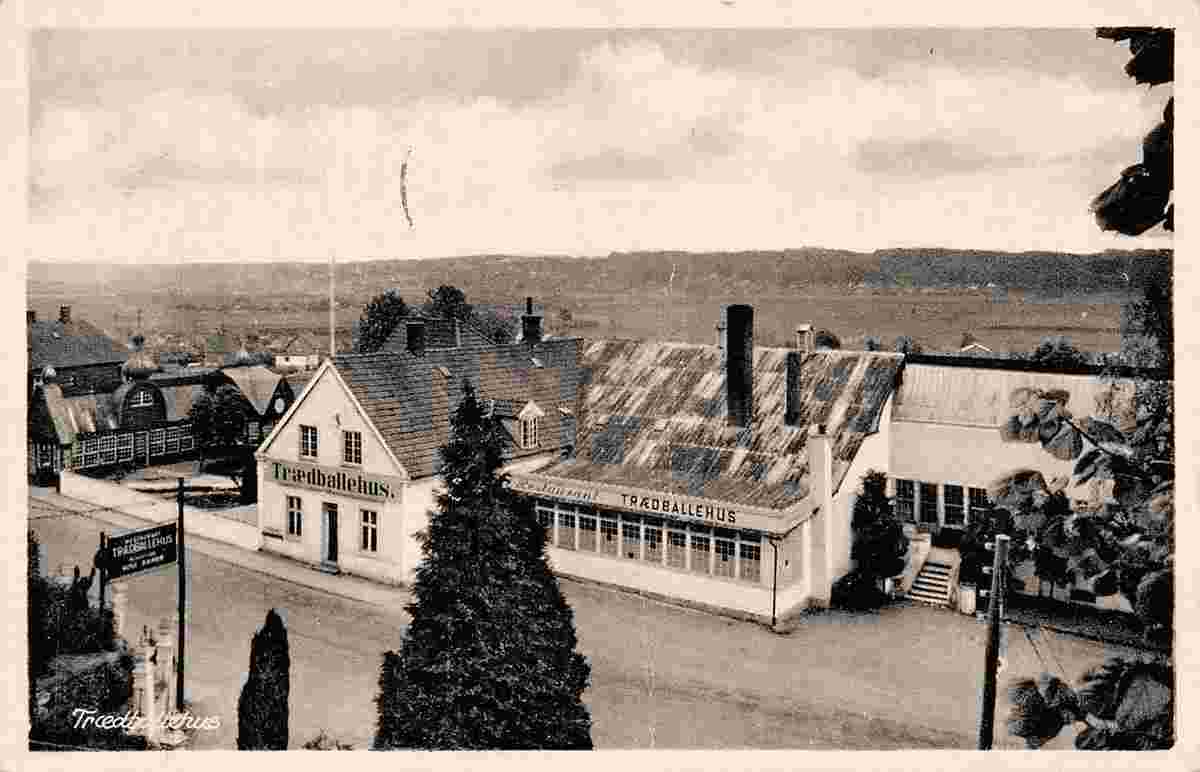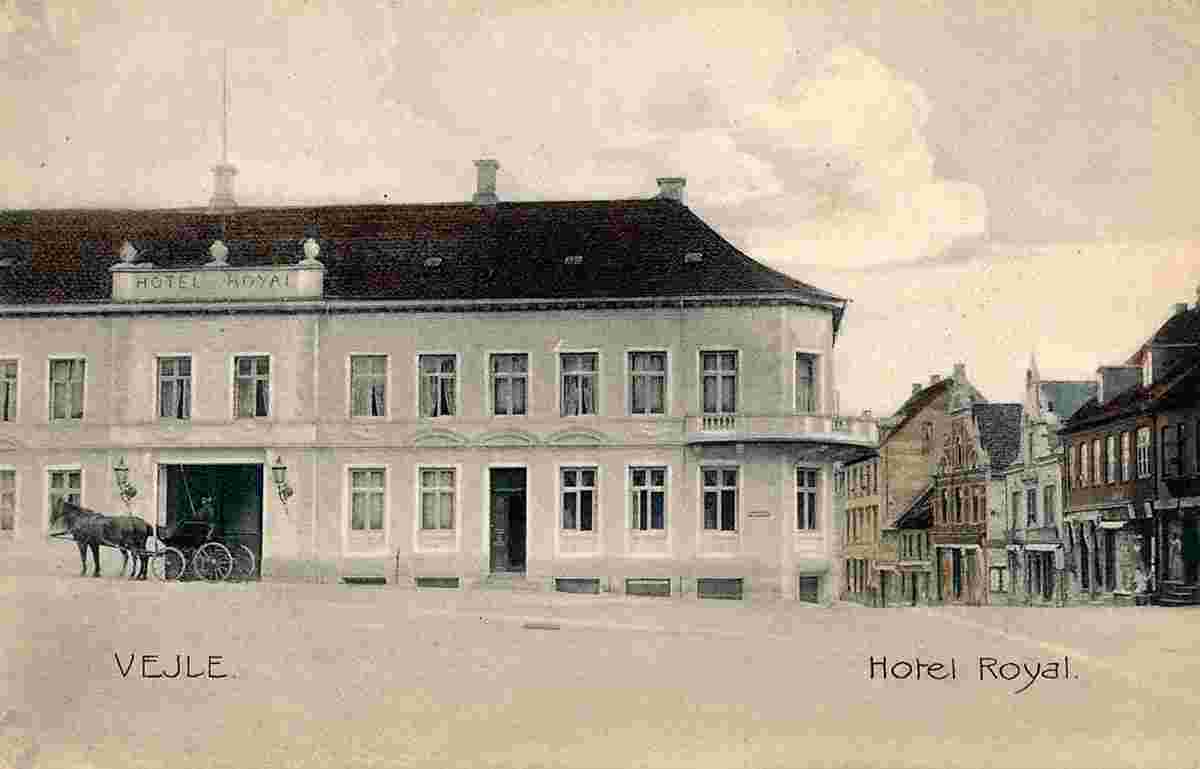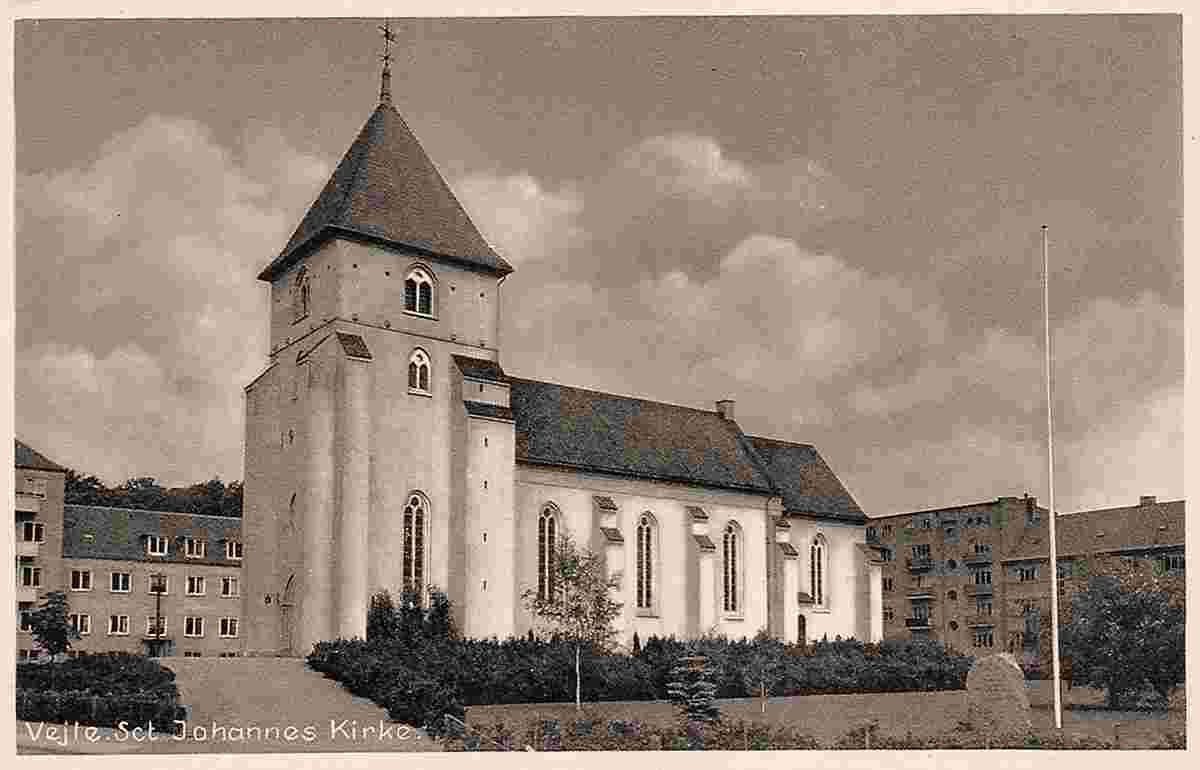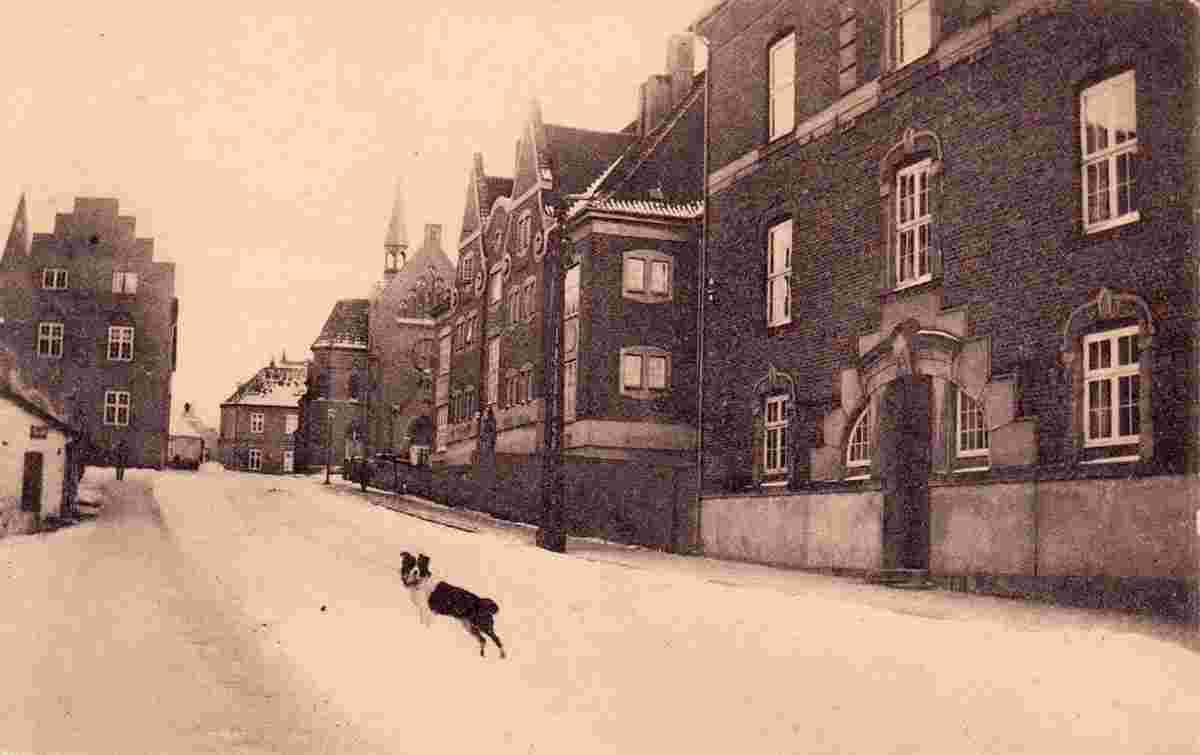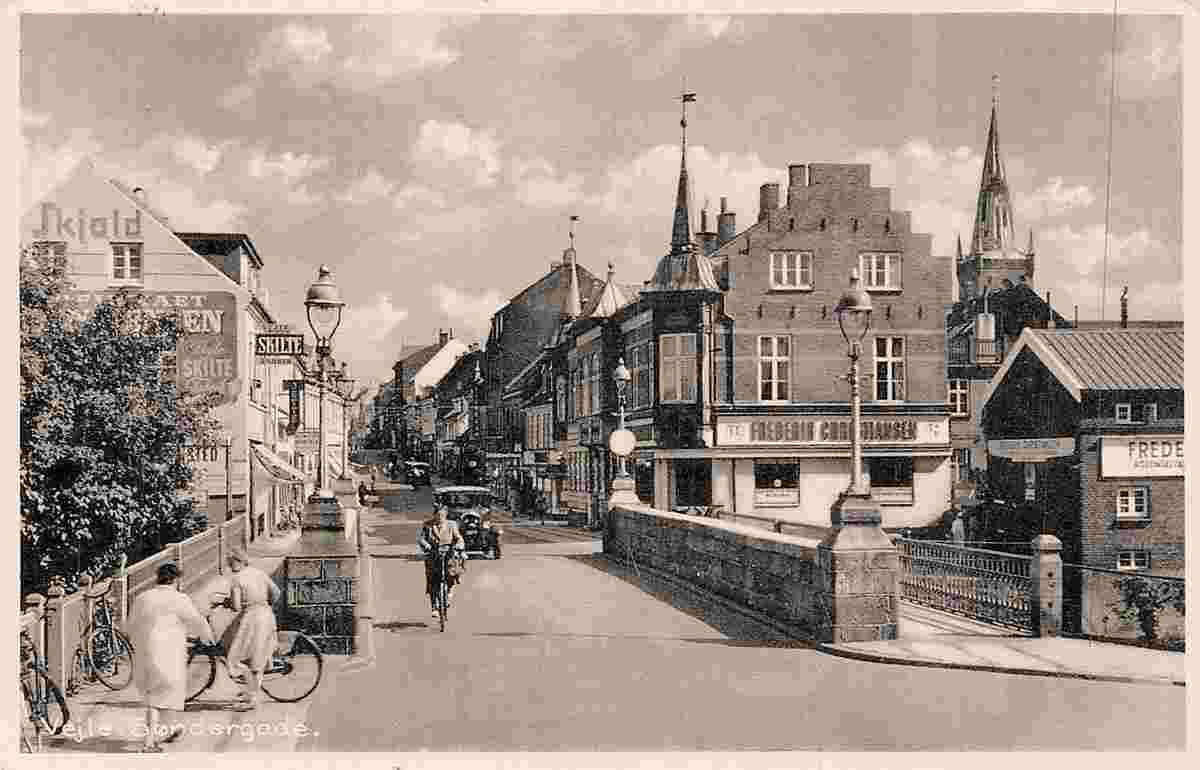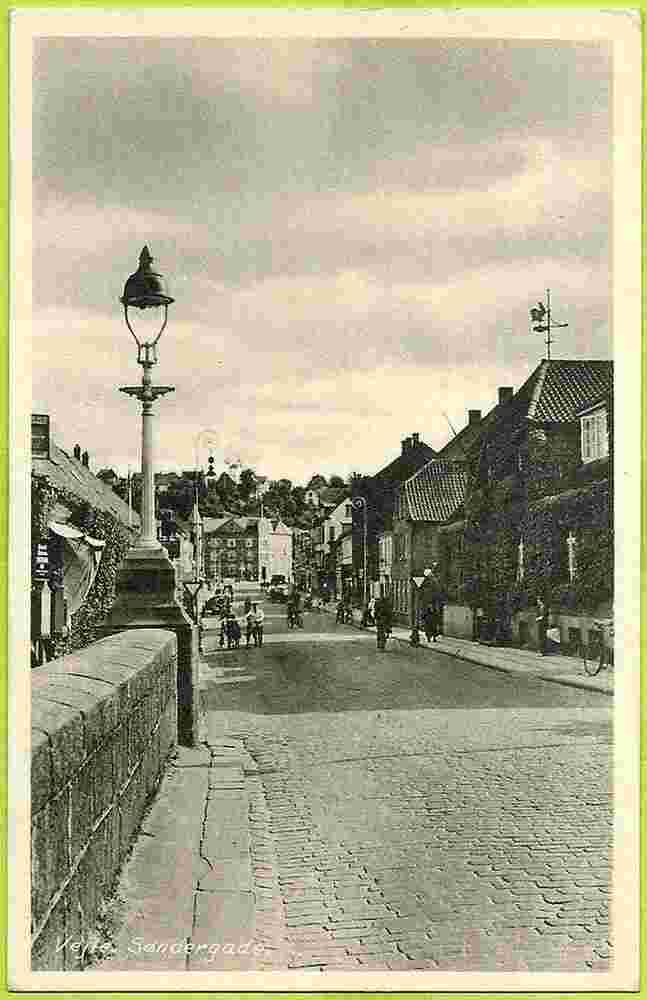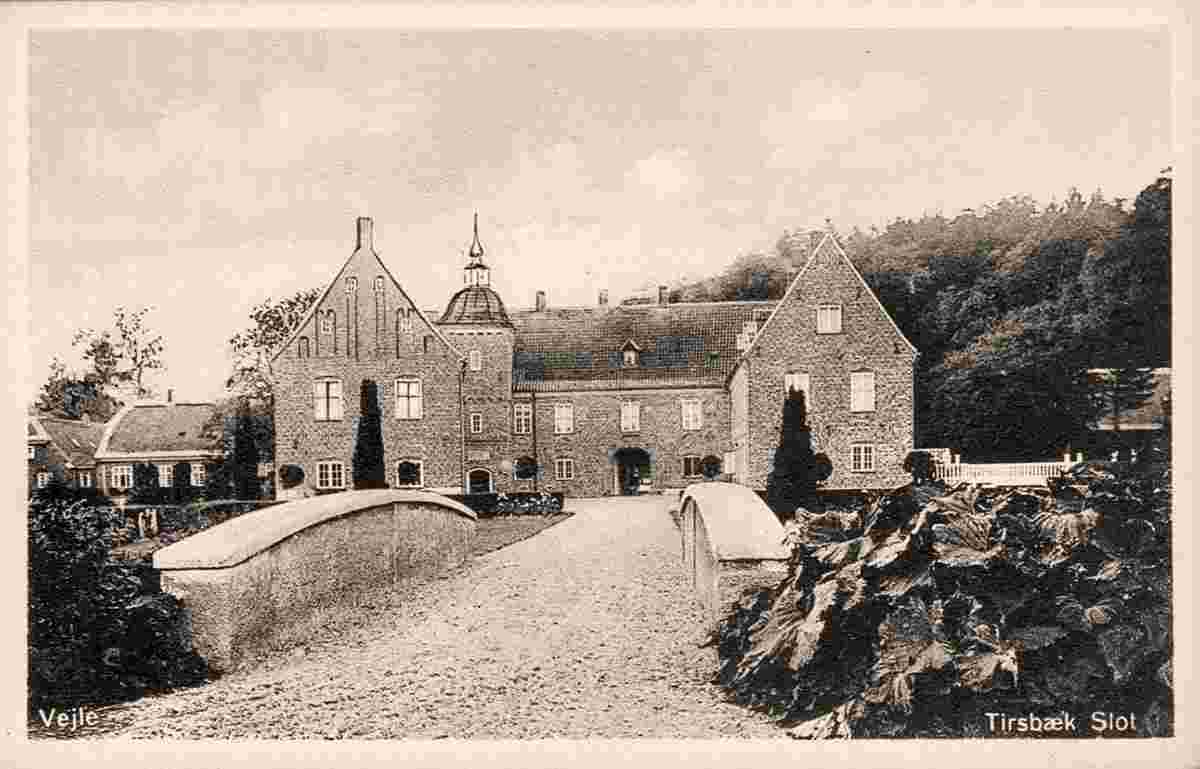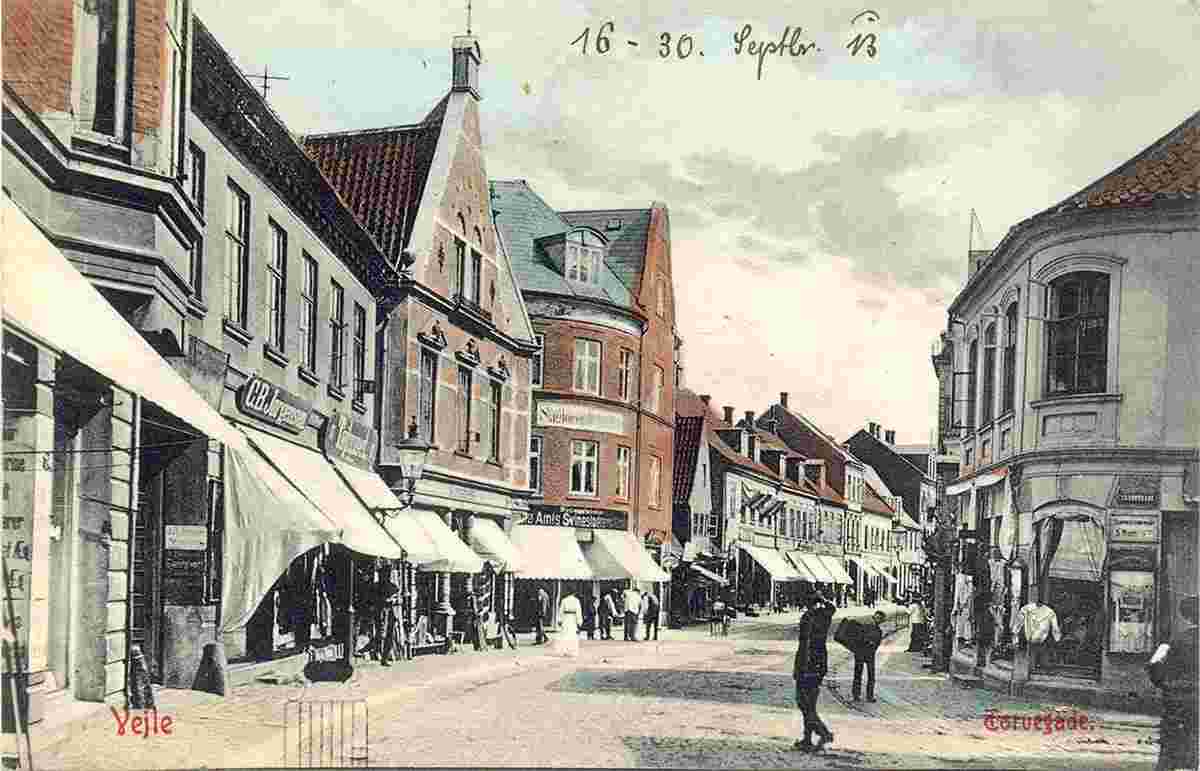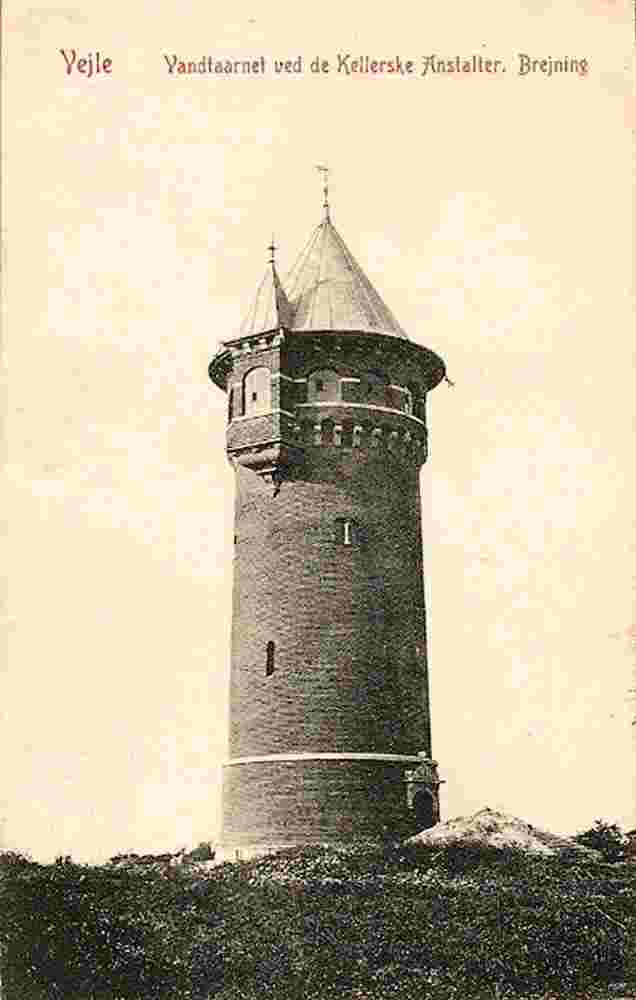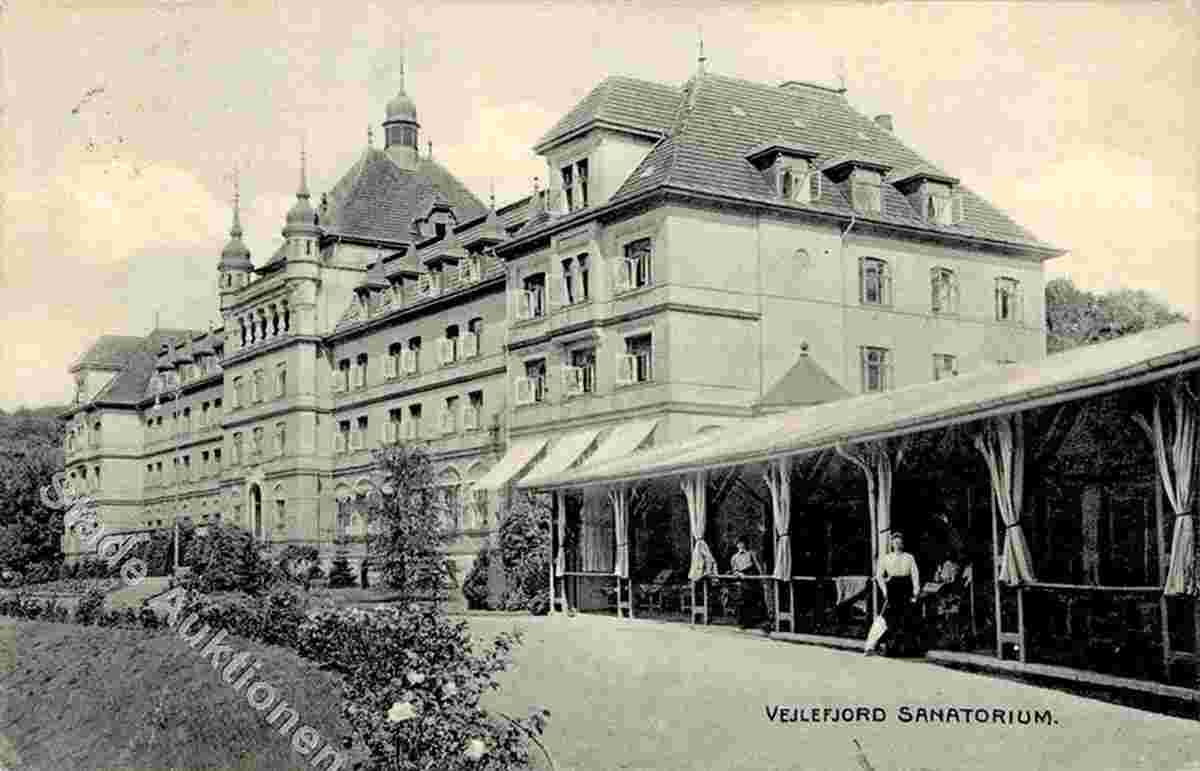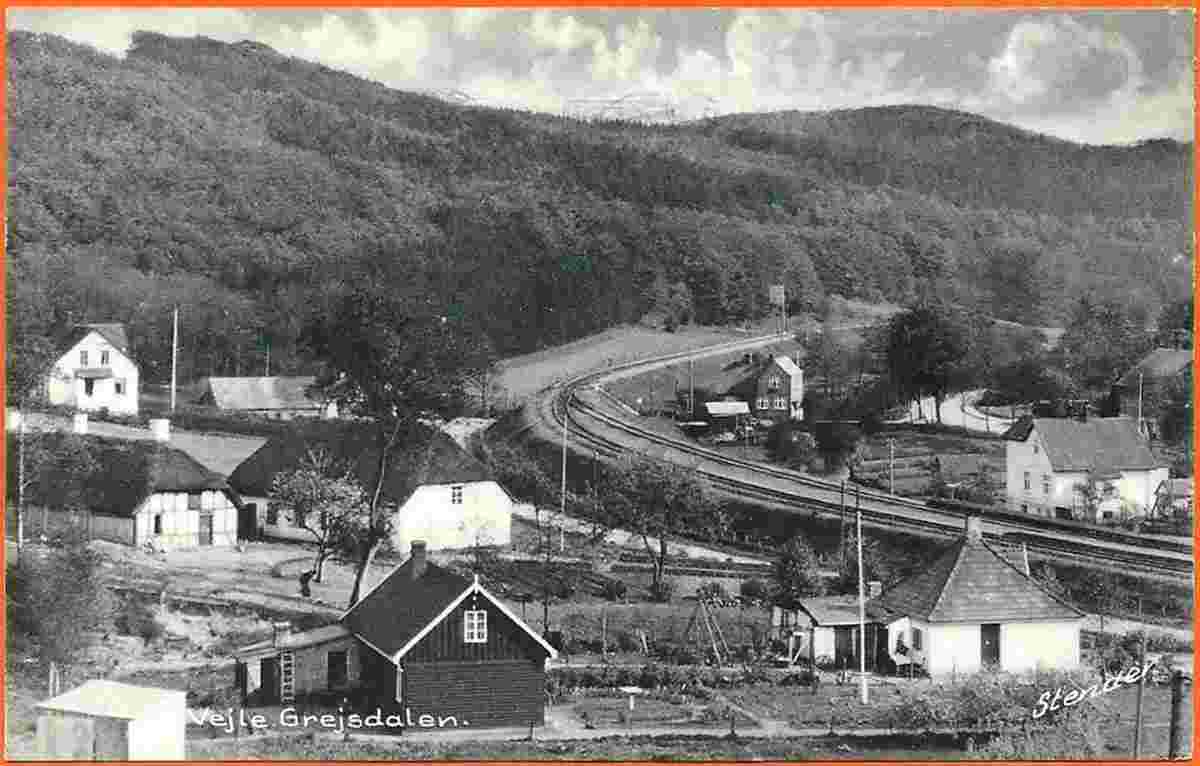Historical and old photos of Vejle, Southern Denmark
HistoryThe word "Vejle" derives from the Old Danish word wæthel, meaning "ford" or "wading place" due to its location at a busy crossing over Vejle River. During Viking times, the wetlands around Vejle had to be crossed at the Ravning Bridge, a nearly half-mile wooden boardwalk. The first recorded mention of the town is from 1256, and the first known merchant town privileges were issued by King Valdemar III in 1327. Archaeological digs near St. Nicolai Church in downtown Vejle have shown that there were residences in the area as far back as 1100. The king's castle, Castrum Wæthel, was located where Vejle Trafikcenter is today. During the Middle Ages, Vejle was important as a market town, and developed along those lines up to the mid-17th century, trading with cities such as Lübeck and Flensburg, in what is now Germany. In the late 17th and early 18th centuries, Vejle's population was diminished as a consequence of plague and war. In 1796, though, Vejle was made the seat of the newly founded Vejle County, and the town expanded throughout the 19th century, benefiting from improvements such as a new harbour on the fjord, a railroad station, and modern utilities. From the mid-19th century into the 20th century, Vejle developed from a provincial market town into a busy industrial centre, eventually becoming known as the "Manchester of Denmark" for its many cotton mills. Origin: en.wikipedia.org | |||||||||||||
 |
Old historical photos and images of Vejle, Denmark
Gamle historiske fotos og billeder af Vejle, Danmark |
| Main page • Countries of Europa • Cities of Denmark |
| Robinson Rd, CB 13862 Nassau, NP, The Bahamas |
